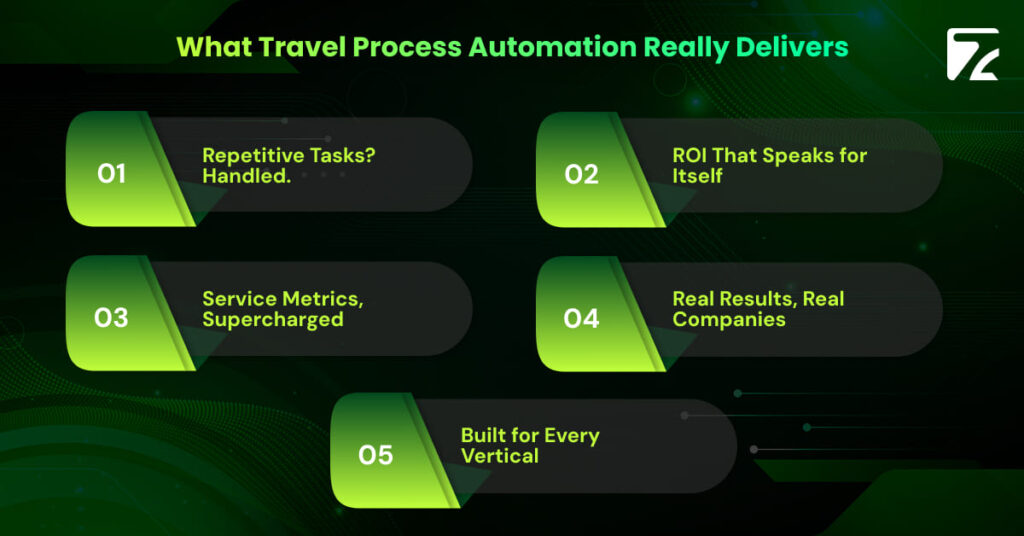Let’s be honest: most teams in the travel business spend a big chunk of their day doing things that don’t really need a person.
Not because they’re unimportant, but because they’re repetitive think reconfirming bookings, issuing refunds, responding to basic inquiries, updating itineraries. If someone could handle those behind the scenes, your team could actually focus on the parts of the job that matter: solving problems, creating experiences, and moving fast when things change.
That’s the heart of Travel Process Automation (TPA).
We’re not talking about replacing people. We’re talking about letting your team skip the mundane so they can focus on the meaningful.

You’ve probably seen fluffy statements about automation “improving efficiency” or “reducing overhead.” That’s fine. But let’s talk about real numbers.
Here’s a straightforward way to calculate return:
Let’s use a real-world example:
A travel management company rolled out automation for reconfirmations and refund processing. The cost? Around $50,000.
Over the next year, they saw savings of about $130,000. That came from cutting down manual labor, avoiding SLA penalties, and speeding up workflows.
That’s a 160% return in 12 months.
The math holds. And that’s before factoring in the reduced stress on the team, or the customers who stayed because they got help quickly.
Here’s a snapshot from businesses that made the switch:
Not everything changes. You still need great agents. You still need a human in the loop. But you stop wasting hours chasing emails, entering data, or copying information between systems.
Let’s talk service metrics because this is where automation starts to make a real difference to your brand.
One American OTA automated their refund engine. It didn’t just make life easier for their support team it changed the numbers:
This firm was tired of manual expense approvals slowing down reimbursements. They worked with RPATech to automate everything.
Not every travel company automates the same way. Here’s how it varies by vertical:
Approval workflows, policy compliance, and audit-ready expense tracking. All of it runs smoother once bots do the grunt work.
Itinerary builders. Dynamic upsells. Personalized packages. Automation handles the boring stuff so you can focus on the experience.
Real-time supplier syncing, automatic group updates, instant availability checks it’s all about scale and reliability.
No system is perfect. Here are the bumps you’ll need to anticipate:
We’re moving toward what analysts are calling hyper-automation and no, it’s not just a buzzword.
This means your systems will eventually:
Think of it as an autopilot for your operations with your team in the captain’s chair, not in the weeds.
Travel automation isn’t about cutting corners. It’s about cutting friction.
It’s the difference between your team spending 30 minutes processing a refund… or spending that same time helping a customer find a better connection or plan a last-minute escape.
In an industry that runs on speed and trust, automation isn’t optional anymore. It’s a multiplier for your service, your savings, and you’re staying power.
It includes automating repetitive tasks like booking confirmations, reconfirmations, refund processing, itinerary updates, and basic customer communication. The goal is to speed up delivery and reduce manual errors.
Many businesses start seeing returns within 6–12 months, especially if they automate high-volume tasks like refunds and support. A 150–200% ROI in the first year isn’t unusual.
Not really. It reduces the time spent on low-value tasks, allowing human agents to focus on problem-solving and personalized service areas where people outperform bots.
Common tools include RPA platforms (like UiPath), AI chatbots, API integrations, CRM automations, and financial reconciliation engines.
The biggest hurdles are usually legacy systems, staff adoption, and ensuring compliance with regulations like GDPR. These can be addressed with proper planning and vendor support.

Travel Automation Expert